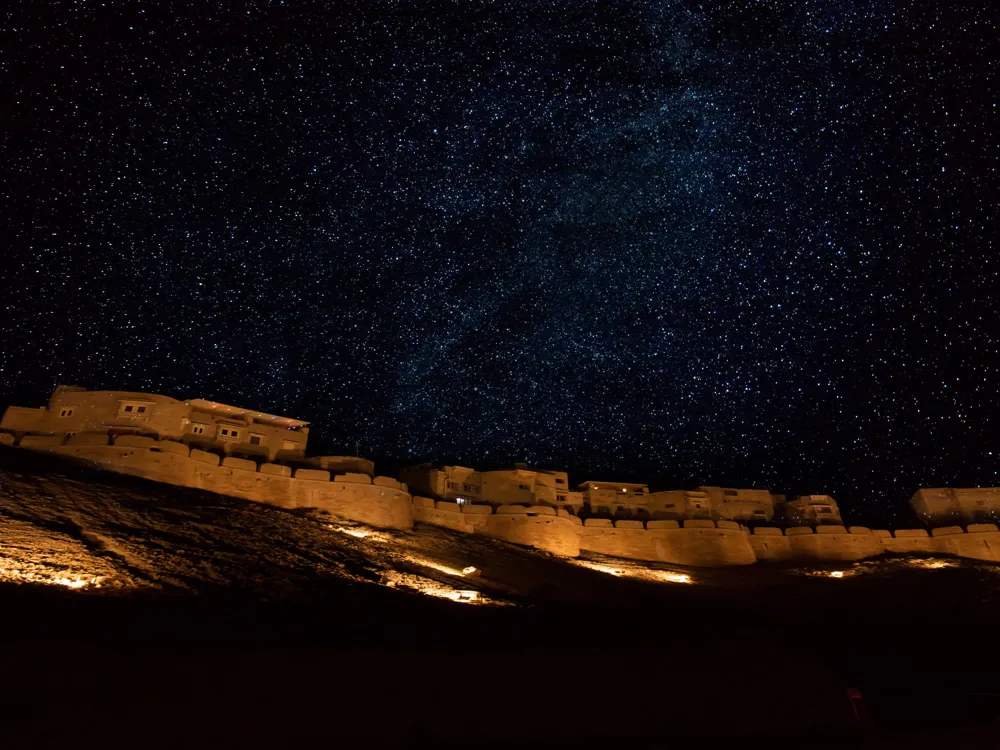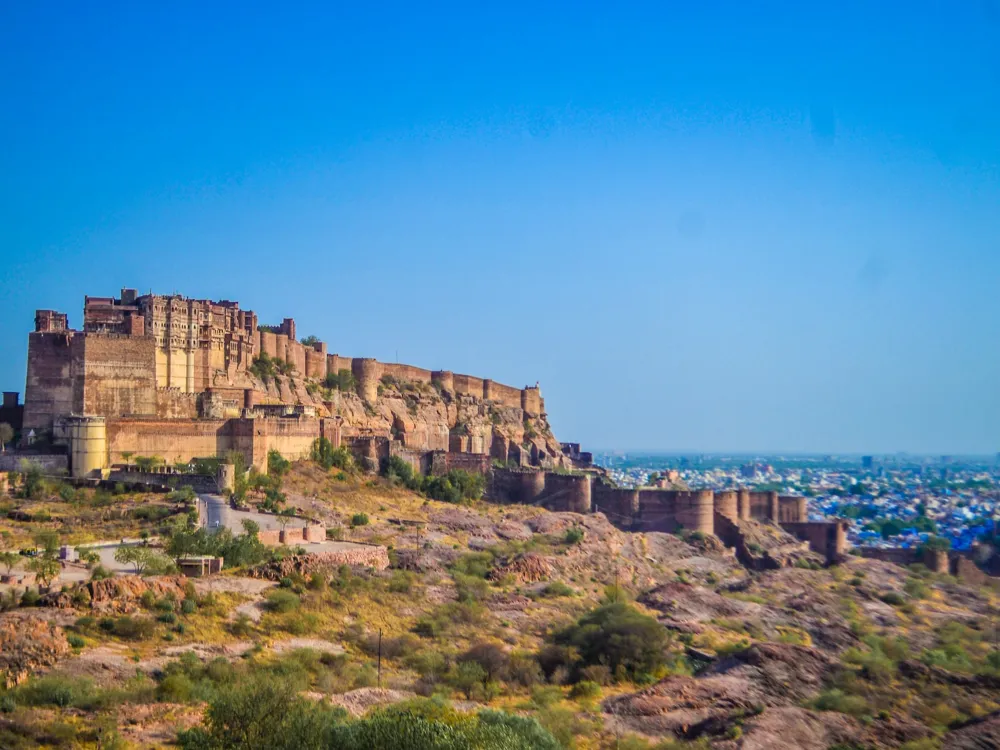The Bhandasar Jain Temple, located in the vibrant city of Bikaner, Rajasthan, is a magnificent example of ancient Indian architecture and religious significance. Constructed in the 15th century by Bhandasa Oswal, this temple is dedicated to the 5th Jain Tirthankara, Sumatinatha. The temple's exterior is adorned with red sandstone and white marble, making it a visual marvel. Its intricate carvings and detailed frescoes capture the essence of Jain mythology and the artistry of the era. One of the temple's most notable features is its use of materials. Legend has it that the foundation was built using ghee (clarified butter) instead of water, which is said to be a reason for its enduring strength. The three-storied structure is divided into various compartments, each adorned with beautifully carved idols, pillars, and domes. The mirror work and gold leaf paintings inside the temple are particularly striking, reflecting the opulence and devotion of the Jain community. The temple is not just a place of worship but also a repository of culture and history. It stands as a testament to the rich cultural heritage and architectural prowess of ancient India. Visitors from around the world come to admire its beauty and experience the tranquil ambiance that pervades its walls. The Bhandasar Jain Temple is a pinnacle of architectural brilliance. Its design exemplifies typical Jain architectural elements combined with local Rajasthani styles. The temple is renowned for its exquisite carvings, ornate pillars, and the use of vibrant colors. Each corner of the temple narrates a story through its detailed carvings depicting scenes from Jain scriptures and mythology. The sanctum sanctorum houses the idol of Sumatinatha, made from marble and adorned with precious stones. Surrounding the main deity are smaller shrines, each an architectural marvel in its own right. The ceilings and walls are decorated with frescoes and paintings made using traditional techniques, many of which illustrate the lives of the Tirthankaras. The use of gold leaf and glass in these paintings adds a celestial glow to the interiors. One of the unique aspects of the temple’s architecture is its blend of opulence with spirituality. The marble flooring, the ornate doorways, and the beautifully carved windows all contribute to an atmosphere of divine tranquility. The temple's alignment with the principles of Vastu Shastra, an ancient Indian science of architecture and buildings, is also evident in its layout and design. Visitors should dress modestly, covering shoulders and knees, as a sign of respect for the religious site. While photography may be allowed in some areas, it is restricted in the sanctum sanctorum. Always ask for permission before taking photos. Consider hiring a guide to fully appreciate the temple's history and architectural details. Guides are available at the entrance. Early morning or late afternoon is ideal to avoid the heat and enjoy the temple in a relatively quieter setting. Follow the temple's customs, such as removing shoes before entering and not consuming non-vegetarian food or alcohol on the premises. Bhandasar Jain Temple is easily accessible from various parts of Bikaner. The nearest airport is the Jodhpur Airport, approximately 250 km away. Bikaner is well-connected by rail, and the Bikaner Railway Station is the closest, being just a few kilometers from the temple. For road travelers, Bikaner is well-linked with major cities through state and national highways. Local transportation like auto-rickshaws, cabs, and buses are readily available to reach the temple. Read More:Overview of Bhandasar Jain Temple, Bikaner, Rajasthan
Architecture of Bhandasar Jain Temple
Tips When Visiting Bhandasar Jain Temple
Dress Appropriately
Photography Restrictions
Guided Tours
Best Time to Visit
Respect the Customs
How To Reach Bhandasar Jain Temple
Bhandasar Jain Temple
Bikaner
Rajasthan
₹ 15,250 onwards
View bikaner Packages
Bikaner Travel Packages
View All Packages For Bikaner
Top Hotel Collections for Bikaner

Private Pool

Luxury Hotels

5-Star Hotels

Pet Friendly
Top Hotels Near Bikaner
Other Top Ranking Places In Bikaner
View All Places To Visit In bikaner
View bikaner Packages
Bikaner Travel Packages
View All Packages For Bikaner
Top Hotel Collections for Bikaner

Private Pool

Luxury Hotels

5-Star Hotels

Pet Friendly





















